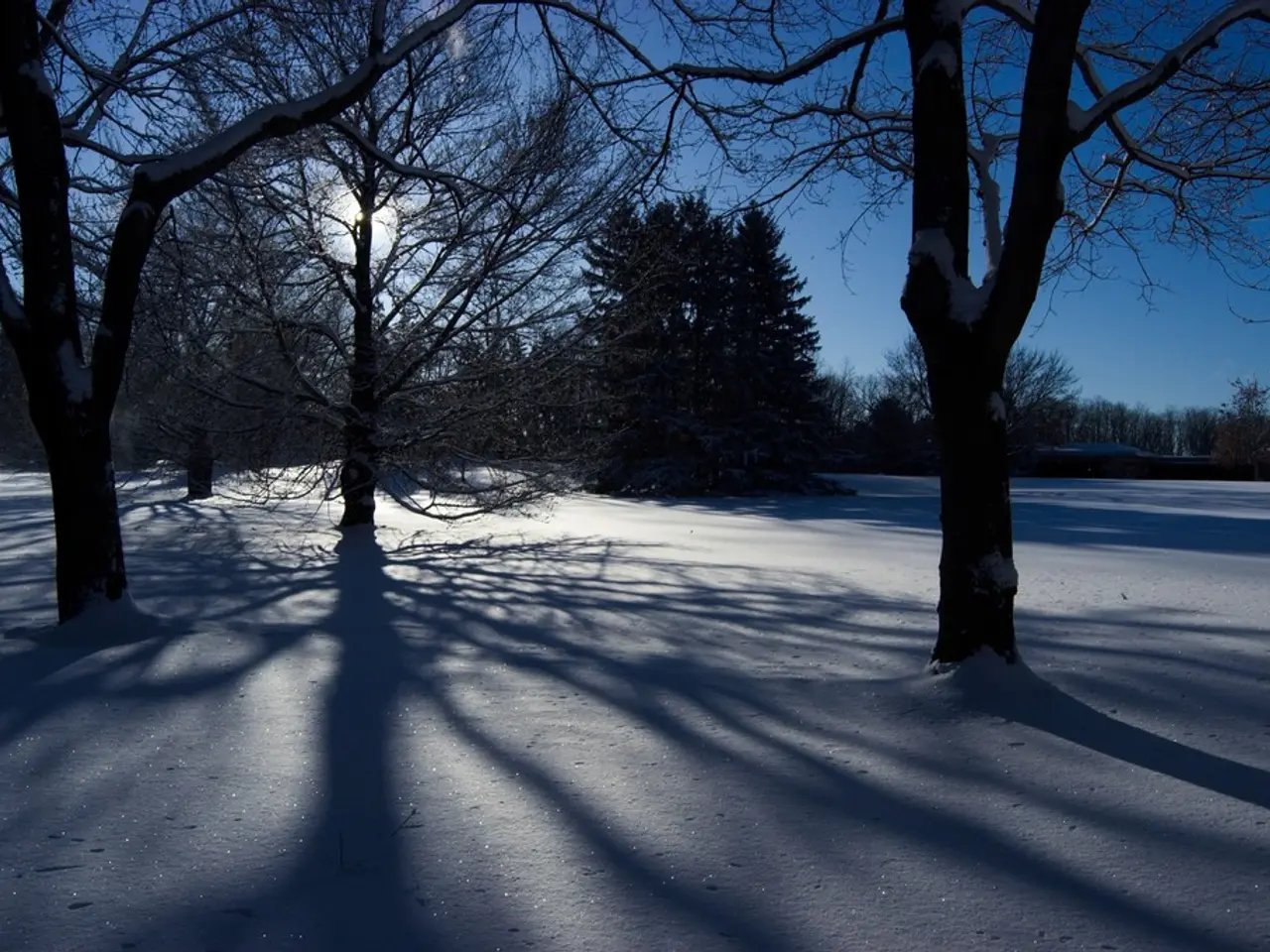Climate change in the Arctic is causing ice to become increasingly thin, with detrimental effects on marine life.
The Arctic is experiencing significant changes in the structure of its sea ice, with a decline in both extent and thickness, particularly in the loss of multi-year ice. This shift from a thicker, more stable multi-year ice pack to a thinner, predominantly seasonal ice cover has far-reaching implications for Arctic ecosystems.
In 2025, the Arctic winter sea ice reached a historic low, with the maximum ice extent measuring 510,000 square miles below the 1981–2010 average. This trend of diminishing ice cover continues, signifying a shift from a thicker, more stable ice pack to a thinner, predominantly seasonal ice cover that melts and refreezes annually.
This structural change in sea ice leads to several critical impacts on Arctic ecosystems. The reduction in multi-year ice means less habitat for species adapted to stable ice conditions, such as polar bears that rely on thick ice for hunting seals. The thinning ice and longer open-water periods affect the timing and extent of algae blooms under the ice, which are foundational to the Arctic food web. Seasonal changes alter primary productivity that supports zooplankton and fish populations.
Altered ice dynamics also modify the physical environment, affecting ice-associated species like seals, and influence predator-prey relationships. Changes in ice cover impact heat exchange between ocean and atmosphere, which can shift regional climate conditions, further affecting ecosystems both locally and beyond the Arctic.
The increase in the speed of the Transpolar Drift Stream is causing ice to move faster across the Arctic and out into the warmer Atlantic, leading to shorter lifespans for ice floes (over 1.5 years). This rapid movement gives floes less time to grow, further exacerbating the decline in thick, ridged ice.
The decrease in thick, ridged ice has been reported by researchers such as Hiroshi Sumata and colleagues at the Norwegian Polar Institute. Mats Granskog, part of a research team monitoring sea ice in the Fram Strait since 1990, describes thick, ridged ice as looking like Lego bricks in an elongated pile from above. However, this accordion-like process by which ice thickens is less common with thin, flat ice.
The new ice regime could have profound impacts on the Arctic ecosystem, with repercussions throughout the marine system. Thinner, flatter ice is more vulnerable to destruction by Arctic cyclones, which are on the rise as the planet warms. Polar bears are forced to walk more quickly to stay close to good hunting areas as the drift speed increases, burning more energy on the "ice treadmill."
Changing ice conditions also threaten ice-reliant mammals such as hooded seals and narwhals, as well as Indigenous communities across the Arctic that rely on ice-hunting for food. The underside of sea ice hosts a multitude of life, such as amphipods. Loss of ice-bottom ridges could reduce habitat for these and other tiny organisms at the base of the ocean food web.
The change in Arctic sea ice structure was triggered by a feedback cycle of rising ocean heat and spiraling ice caused by record-low summer ice cover in 2007. Research published in Nature reports that Arctic sea ice has undergone a significant change in structure, becoming thinner and flatter since around 2007. The full consequences of these changes remain to be seen, but it is clear that the Arctic is undergoing profound changes that threaten biodiversity and disrupt ecological processes that have evolved over millennia.
[1] Stroeve, J. C., Markus, T., Boisvert, L., & Barrett, A. P. (2012). Changes in Arctic melt pond area and their impact on the albedo feedback. Geophysical Research Letters, 39(13).
[3] Holland, M. M., Bitz, C. M., & Tremblay, L. B. (2015). The role of sea ice in the Arctic climate system. Annual Review of Marine Science, 7, 137–162.
- The decline of multi-year ice in the Arctic affects the health-and-wellness of various species, such as polar bears, which face difficulties hunting due to the loss of their stable ice habitat.
- climate-change contributes to the thining and flattening of Arctic sea ice, leading to shorter lifespans for ice floes and exacerbating the decline in thick, ridged ice.
- Environmental researchers, like Hiroshi Sumata and Mats Granskog, have reported the decrease in thick, ridged ice and its impact on the ecosystem, likening the new ice structure to less durable Lego bricks.
- Mutiple studies, including those published in Nature, highlight that climate-change has significantly altered the structure of Arctic sea ice, endangering species and disrupting ecosystems that have thrived for millennia.
- Scientists examining the Arctic ecosystem find that the shift towards thinner and flatter ice is making ice more vulnerable to destruction by Arctic cyclones and undermining the well-being of ice-reliant species, ranging from amphipods beneath sea ice to larger mammals like narwhals.
- The consequences of the changing sea ice structure on Arctic ecosystems are far-reaching and interconnected, affecting both the marine life and the mental-health of indigenous communities that depend on ice hunting for food.




